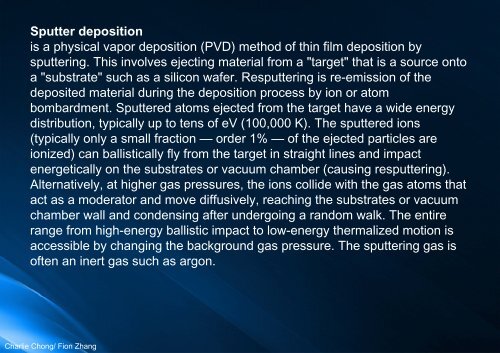ASNT Level III- Visual & Optical Testing
My Level III Self Study Notes Reading 4 Section 4B
My Level III Self Study Notes Reading 4 Section 4B
You also want an ePaper? Increase the reach of your titles
YUMPU automatically turns print PDFs into web optimized ePapers that Google loves.
Sputter deposition<br />
is a physical vapor deposition (PVD) method of thin film deposition by<br />
sputtering. This involves ejecting material from a "target" that is a source onto<br />
a "substrate" such as a silicon wafer. Resputtering is re-emission of the<br />
deposited material during the deposition process by ion or atom<br />
bombardment. Sputtered atoms ejected from the target have a wide energy<br />
distribution, typically up to tens of eV (100,000 K). The sputtered ions<br />
(typically only a small fraction — order 1% — of the ejected particles are<br />
ionized) can ballistically fly from the target in straight lines and impact<br />
energetically on the substrates or vacuum chamber (causing resputtering).<br />
Alternatively, at higher gas pressures, the ions collide with the gas atoms that<br />
act as a moderator and move diffusively, reaching the substrates or vacuum<br />
chamber wall and condensing after undergoing a random walk. The entire<br />
range from high-energy ballistic impact to low-energy thermalized motion is<br />
accessible by changing the background gas pressure. The sputtering gas is<br />
often an inert gas such as argon.<br />
Charlie Chong/ Fion Zhang


















